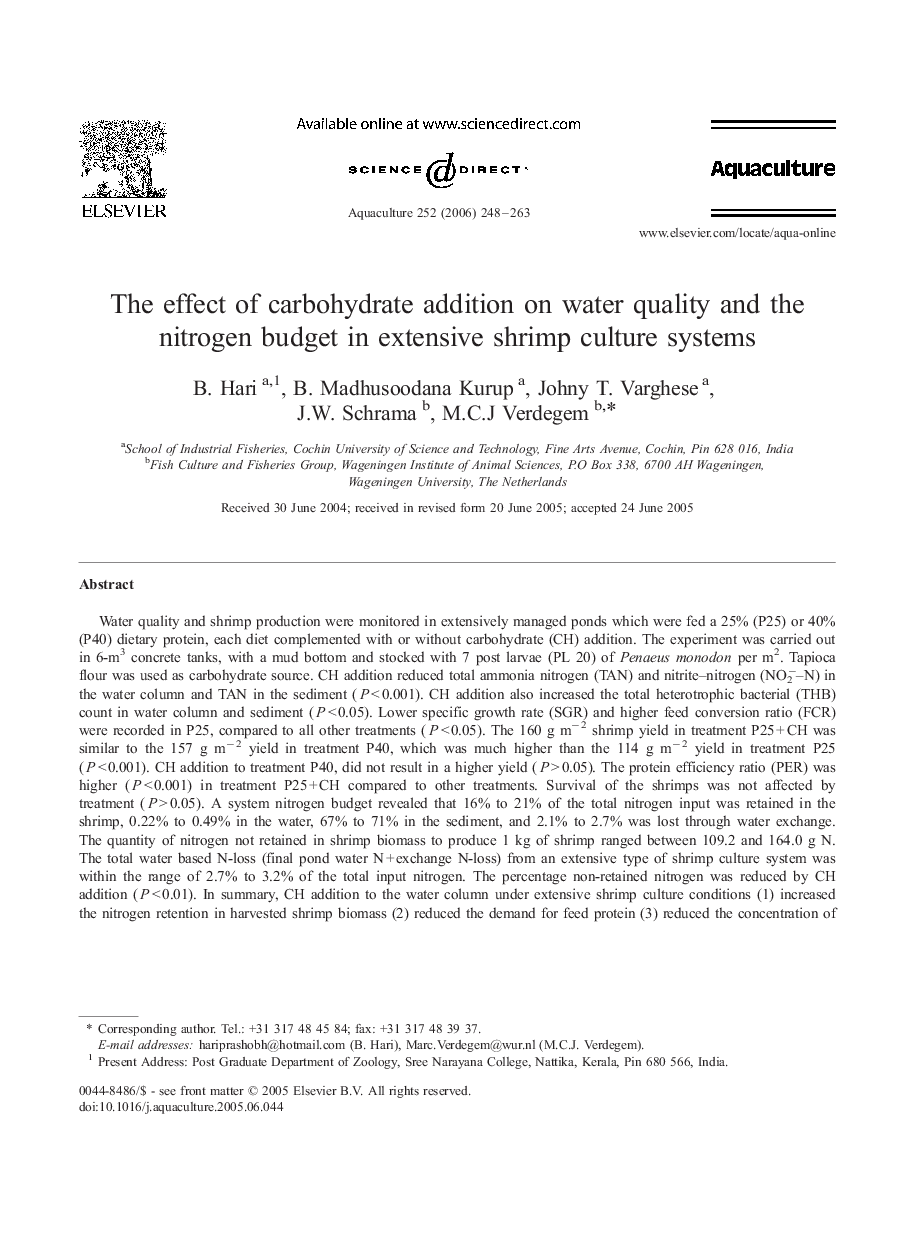| کد مقاله | کد نشریه | سال انتشار | مقاله انگلیسی | نسخه تمام متن |
|---|---|---|---|---|
| 2426157 | 1552989 | 2006 | 16 صفحه PDF | دانلود رایگان |

Water quality and shrimp production were monitored in extensively managed ponds which were fed a 25% (P25) or 40% (P40) dietary protein, each diet complemented with or without carbohydrate (CH) addition. The experiment was carried out in 6-m3 concrete tanks, with a mud bottom and stocked with 7 post larvae (PL 20) of Penaeus monodon per m2. Tapioca flour was used as carbohydrate source. CH addition reduced total ammonia nitrogen (TAN) and nitrite–nitrogen (NO2−–N) in the water column and TAN in the sediment (P < 0.001). CH addition also increased the total heterotrophic bacterial (THB) count in water column and sediment (P < 0.05). Lower specific growth rate (SGR) and higher feed conversion ratio (FCR) were recorded in P25, compared to all other treatments (P < 0.05). The 160 g m− 2 shrimp yield in treatment P25 + CH was similar to the 157 g m− 2 yield in treatment P40, which was much higher than the 114 g m− 2 yield in treatment P25 (P < 0.001). CH addition to treatment P40, did not result in a higher yield (P > 0.05). The protein efficiency ratio (PER) was higher (P < 0.001) in treatment P25 + CH compared to other treatments. Survival of the shrimps was not affected by treatment (P > 0.05). A system nitrogen budget revealed that 16% to 21% of the total nitrogen input was retained in the shrimp, 0.22% to 0.49% in the water, 67% to 71% in the sediment, and 2.1% to 2.7% was lost through water exchange. The quantity of nitrogen not retained in shrimp biomass to produce 1 kg of shrimp ranged between 109.2 and 164.0 g N. The total water based N-loss (final pond water N + exchange N-loss) from an extensive type of shrimp culture system was within the range of 2.7% to 3.2% of the total input nitrogen. The percentage non-retained nitrogen was reduced by CH addition (P < 0.01). In summary, CH addition to the water column under extensive shrimp culture conditions (1) increased the nitrogen retention in harvested shrimp biomass (2) reduced the demand for feed protein (3) reduced the concentration of TAN and NO2−–N in the pond, and (4) reduced nitrogen discharge making extensive shrimp farming more ecologically sustainable and economically viable.
Journal: Aquaculture - Volume 252, Issues 2–4, 10 March 2006, Pages 248–263